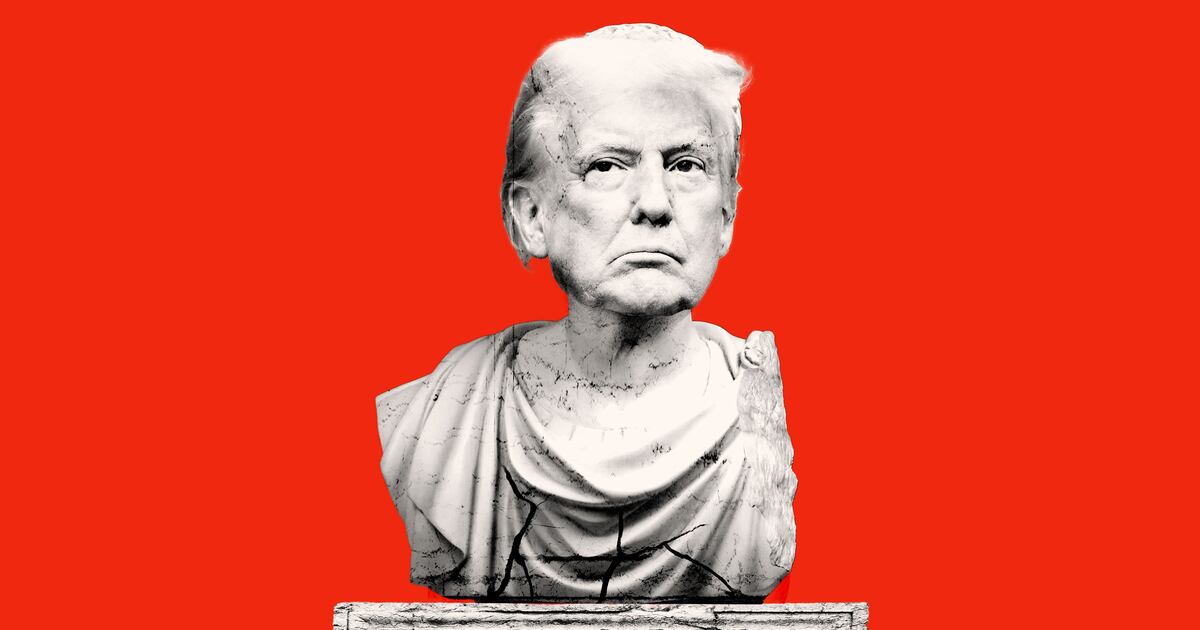As the Daily Mail helpfully pointed out this week, “Kim Kardashian wears head-to-toe hot pink repeatedly.” Since early August, Kardashian has sported the color “SIX times,” whether it be on a Yeezy mini, $2850 Balenciaga leggings, or Chanel unitard.
The mogul is less thinking pink and more willing herself to become a walking Barbie doll. Where millennial pink detached the typically feminine hue from its gender implications, Kardashian’s color pulls those attachments into one big, girly hug.
Perhaps in a moment of girl power solidarity with her sister, this week Khloe Kardashian wore her own take on the hue, pairing it with a boxy blazer in an Instagram post.
They’re not alone. At Rihanna’s fall Fashion Week runway show, she dressed a model in a matching hot pink bra set. When the model Mariana Zaragoza walked for Matty Bovan in London, colorist Josh Wood dyed her bouffant a color he euphemized to Vogue as a “strong coral.” (It was hot pink, but sure.)
Millennial pink communicates a detached, sanitized calm— picture the serene palette of Wes Anderson’s The Grand Budapest Hotel. While it shares a space on the color wheel with hot pink, that variety is loud, unabashedly sexual. As my editor mused over Slack, “I wonder if after millennial pink, everybody thought: geez, this is dull. Let’s do hot again.”
Valerie Steele, curator of the Museum at FIT’s current exhibition, Pink: The History of a Punk, Pretty, Powerful Color, spoke with The Daily Beast about pink’s complicated reputation. “Pink is not innately feminine,” she said. “But for about 150 years, between the middle of the 19th century and the end of the 20th century, pink was primarily associated with women.”
Steele then rattled off the different descriptors for pink, and how each adjective falls into one of two categories. There are the innocent, saccharine connotations: baby, Barbie, bubblegum. Pink can also go from zero to sexy: hot, bordello, shocking.
“When you’re talking about skin-tight, shiny looking pink clothes,” such as the kind seen on global runways and jetsetting Kardashians, Steele said, “you’re referencing genitalia, tongues, and mouths. The pink parts.” Perhaps no one took this more literally than Janelle Monae, who wore labia-looking pants in the music video to her single “PYNK” earlier this year.
Pink wasn’t always so aggressively gendered, and like many women, the color has lived several lives and iterations. According to Steele, “Throughout most of western history, pink was not an important color. Many books on color don’t bother to mention it at all.”
In the 1700s, a pale salmon—the OG millennial pink—became popular in French aristocratic circles. “It was not gendered,” Steele noted. “Fashionable men and women, boys and girls wore it, as it was considered fashionable and trendy.”
It helped that a long-lasting Brazilian dye had just been discovered and starting to be used in clothing production. As the exhibit notes, Louis XV’s mistress Madame de Pompadour reportedly favored the hue, which added to its allure as a symbol of the upper echelons.
In 1869, Louisa May Alcott published Little Women, where the youngest sister Amy says that it’s “French fashion” to dress little boys in blue and girls in pink. Eternally less chic than their French counterparts, American families continued to dress their babies in white, forever a symbol of purity.
Initially, the pink and blue debate was less of a moral stance and more of a marketing scheme. “Manufacturers in the US realized that by having different colors for each gender, they could sell more stuff,” Steele noted. “But they couldn’t exactly make up their minds of which color went with which.”
The Museum notes that the magazine Infants Department was still fielding reader questions on the topic in 1918. “There has been great diversity of opinion,” one writer wrote in response. “The generally accepted rule is pink for the boy and blue for the girl. The reason is that pink, being a stronger color, is more suitable for the boy, while blue, which is more delicate and dainty, is prettier for the girl.”
Steele’s own theory of what finally destined pink to its place in Claire’s aisles and Mean Girls glory was the acquisition of Thomas Gainsborough’s portrait “The Blue Boy” by American railroad magnate Henry Edwards Huntington.
“That purchase received a huge amount of publicity,” Steele explained. “A lot of people misinterpreted it to think that the in the 18th century boys only wore blue, and girls only wore pink.” In fact, Gainsborough had also painted a nearly identical “Pink Boy.”
As Jennifer Wright wrote for Racked in 2016, you can “blame World War II” for promoting the feminization of pink. More specifically, direct any ire to Mamie Eisenhower, who was mad for the hue. She wore a rhinestone-studded blush gown to her husband’s 1953 inauguration, and much like Anderson with his fictional grand hotel, decorated the White House in all pink everything.
While the first lady promoted pink as a symbol of docile domesticity, there was a “bad” pink, too. Take, for instance, the strapless, satin gown Marilyn Monroe wore during the “Diamonds Are a Girl’s Best Friend” number in Gentlemen Prefer Blondes, released the same year as Eisenhower’s inauguration. (Madonna later reinterpreted this look for her 1984 “Material Girl” music video.)
Just as dueling gender binaries had been created, a line had been drawn for the types of women there could be. There were the Mamies, who kept the home fires burning in carnation blush while men were off capital-W working. Then, there were the Marilyns, clad in richer, opulent shades, still lying in wait for men—in hotel suites rather than the master bedroom.
While the fashion world clung to the softer cliche for most of the 20th century’s second half—Christian Dior reportedly decreed: “Every woman should have pink in her wardrobe”—pop culture played with the cliches. Elvis drove a pink Cadillac. Paul Simonon of The Clash said, “Pink is the only true rock and roll color,” a sentiment Harry Styles repeated to Rolling Stone in 2017.
“We see a lot of re-appropriation of pink for both women and gay men,” Steele said, noting the pink triangle Act Up activists put on their “Silence = Death” signs and pins in the 1980s and 90s. The pink triangle symbol, predating the now-familiar rainbow, was inspired by the badge imprisoned gay men were forced to wear in Nazi concentration camps.
In recent years, pink has become a visual code for protesting women. It’s the color associated with breast cancer activism, the pussy hats worn during the Women’s March, and the anti-violence NGO CodePink. Activist Sampat Pal led the Gulabi Gang, a vigilante group that combats domestic violence in India. Guess what “Gulabi” translates to in Hindu?
Steele believes we’ve survived the millennial pink-ocolypse and are heading into a more androgynous era of dressing. “Society can give colors different meanings, or change and complicated existing ones,” she said. “That’s what’s happening right now. We're saying, pink is pretty, but it could also be powerful."
If Kim Kardashian is trying to send a sartorial message through her barrage of bubblegum, it could simply be that she just likes the darn color. As the editors of GQ urged men this year, "Don't think about wearing a pink, just wear the hell out of it."
Maybe that’s the statement in itself: sometimes a pink is just a pink.
Pink: The History of a Punk, Pretty, Powerful Color is at The Museum at FIT until January 5, 2019.







